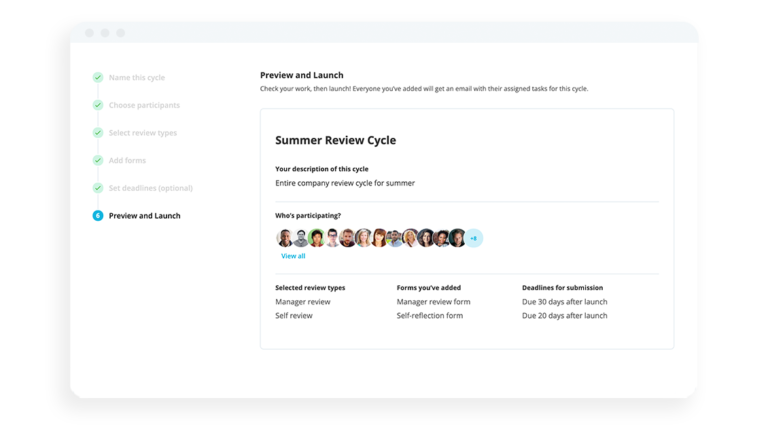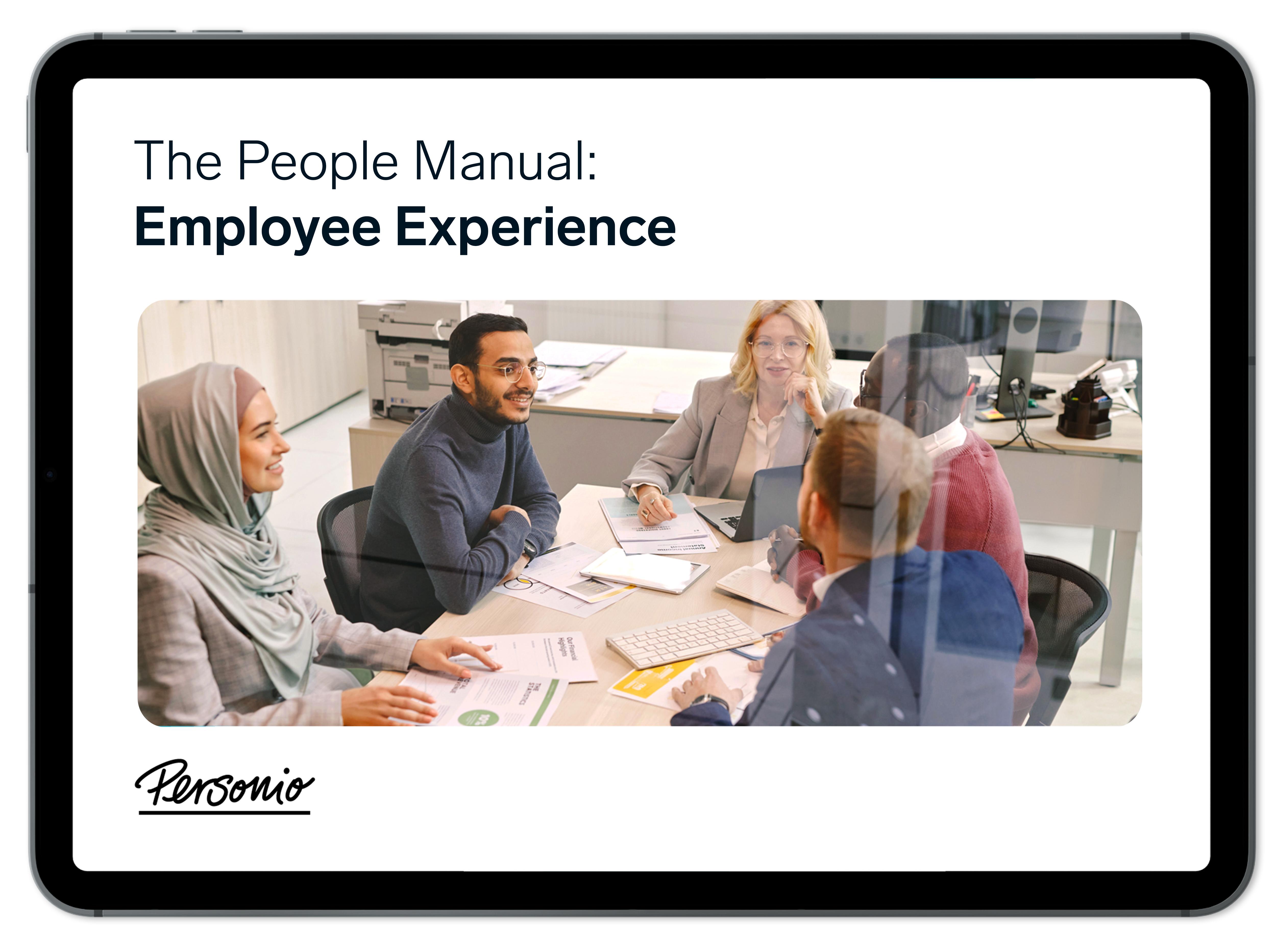What is Continuous Professional Development?

What is continuing professional development – and why does it matter?
Continuing Professional Development (CPD) isn’t just a buzzword or a workplace perk. It’s a vital element of performance management, one that helps employees grow, evolve, and stay sharp in the ever-changing world of work. It encompasses any activity, learning experience or education pursuit that supports the growth of employees beyond their initial qualifications.
In this article, we will explain what continuing professional development really means, how it differs from traditional training, and discuss how HR leaders can make it a strategic driver of performance, engagement, and talent retention.
Ready to focus on every element of employee experience? Download our guide.Contents
- 1What is continuing professional development?
- 2The importance of continuing professional development in HR and business
- 3Understanding the continuing professional development cycle
- 4Creating a continuing professional development plan
- 5How HR can promote continuing professional development
- 6Why continuing professional development
What is continuing professional development?
Continuing professional development refers to the ongoing, intentional learning professionals undertake to improve their skills, knowledge, and abilities. It’s not a one-off event. It’s a mindset – a culture, even – built around constant progress.
In contrast to one-off training events, CPD, also known as continuous or ongoing professional development, recognises that development can be formal (like a workshop), informal (like mentoring), or self-directed (like reading or research).
The key? It must be relevant, deliberate, and tied to the person’s current or future role.
Some great examples of CPD include:
Attending a conference on emerging digital trends
Shadowing a more experienced colleague
Learning a new piece of software relevant to your job
Listening to industry podcasts or reading whitepapers
Getting certified in a new method or technique
Participating in a coaching or mentoring relationship
If it helps you grow in your role or profession, it’s continuing professional development.
It’s this cyclical, reflective nature that elevates continuing professional development from a simple training task to a powerful professional practice.
The importance of continuing professional development in HR and business
1. Boosts retention and engagement
Employees who sense growth opportunities are more likely to stay. According to a SurveyMonkey study, 86% of employees consider job training important, and 74% are willing to learn outside of work hours. Continuing professional development supports this desire for growth and fuels long-term engagement.
2. Drives business performance
Continuing professional development ensures your workforce remains relevant and innovative. In a McKinsey study, organisations that rated their talent development as highly effective were also more likely to outperform competitors. Using integrated performance management software can help HR teams align development with business outcomes and track improvements more effectively.
3. Closes skill gaps
Rapid technological shifts make certain skills obsolete. Continuing professional development identifies and addresses these skill gaps before they hinder performance, ensuring employees are not just current but also future-ready.
4. Supports a learning culture
A strong Continuing Professional Development framework promotes reflection, curiosity, and a proactive attitude toward improvement. This culture of continuous improvement is essential for agile and competitive organisations.
5. Enhances employer branding
Offering robust professional development opportunities attracts top talent and signals that your organisation invests in people, fosters ambition, and offers clear career progression pathways. When combined with transparent compensation management tools, it strengthens your value proposition as an employer.
Are Processes Getting in the Way of Development?

Skip all those cumbersome processes by automating performance with Personio today.
Find out moreUnderstanding the continuing professional development cycle
The Continuing Professional Development Cycle offers a practical framework for managing learning and tracking progress. It typically consists of six stages:
Planning – Identifying where progress can be made
Action – Participating in activities that ensure development
Review – Taking a step back and seeing what was learned.
Application – Embedding lessons into daily work
Transparency – Sharing what was learned to help others
Reflection – Taking stock of the impact made
Unlike one-off training events, the CPD cycle is iterative and continuous. Many professional bodies, including those governing nurses, Chartered Surveyors, Chartered Accountants – or any of the approximately 400 professional bodies in the UK, representing 13 million professionals – require members to complete a certain number of annual CPD hours. However, the CPD cycle is just as valuable for non-regulated professions, where agility and lifelong learning are key to success. Encouraging employees to document and reflect on their CPD activities is vital. Without a plan, professional development risks becoming reactive or ineffective.
Creating a continuing professional development plan
To ensure continuing professional development is effective, it must be intentional. A CPD plan gives structure to learning goals and helps employees stay accountable. It’s a personalised roadmap for growth and should be:
Based on SMART goals (specific, measurable, achievable, realistic, time-bound)
Aligned with business strategy and career progression paths
Supported by time, resources, and tracking mechanisms
CPD plans help to transform vague ambitions into measurable outcomes, turning learning into a strategic advantage. Leveraging people analytics can identify skill gaps and tracl development progress effectively.
Half a decade of insights on employee experience

Our "People Manual" covers all things related to employee experience and developing initiatives that result in more engaged employees. Grab your free copy right now.
Download It TodayHow HR can promote continuing professional development
As an HR leader, you’re in a unique position to make continuing professional development available and impactful. That means moving beyond ad hoc training and building an ecosystem of development that meets both individual and business needs. A unified HR software platform can streamline these efforts by centralising development planning, tracking, and reporting. Here’s how to get started:
1. Align with business goals
Link CPD efforts to your company’s core competencies and strategic objectives. That could mean developing leadership pipelines, boosting digital skills, or reinforcing customer-centric behaviours. Implementing robust employee onboarding ensures new hires are aligned with these goals from day one.
2. Build a CPD-friendly culture
Encourage employees to take ownership of their learning. Recognise and reward continuing professional development efforts, and ensure managers regularly check in on development goals. An HR communication platform can expedite these conversations and promote a culture of continuous learning.
3. Offer varied development formats
Not everyone learns the same way. Combine formal training, like courses, certifications via Personio Voyager, with informal methods, like mentorship, stretch assignments and peer learning.
4. Track, reflect, and refine
Use tools to document and evaluate CPD progress. Encourage employees to reflect on what they’ve learned and how it’s impacted their performance. Regular employee feedback surveys can provide insights into the effectiveness of continued professional development initiatives.
5. Simplify the CPD cycle
Create easy-to-follow CPD plans based on SMART goals. Offer time, budget, and space for employees to complete their development activities without burnout or overload. Utilising workflow automation tools can streamline the CPD process, ensuring timely reminders and task completions.
Why continuing professional development is more than a buzzword
Continuing professional development is not just a buzzword or compliance exercise, it’s a philosophy – and when it’s embedded in your organisation, it becomes a growth engine.
By investing in CPD, your organisation fosters innovation, retains top talent, and prepares for future demands. In short, continuing professional development turns today’s workforce into tomorrow’s leaders.


